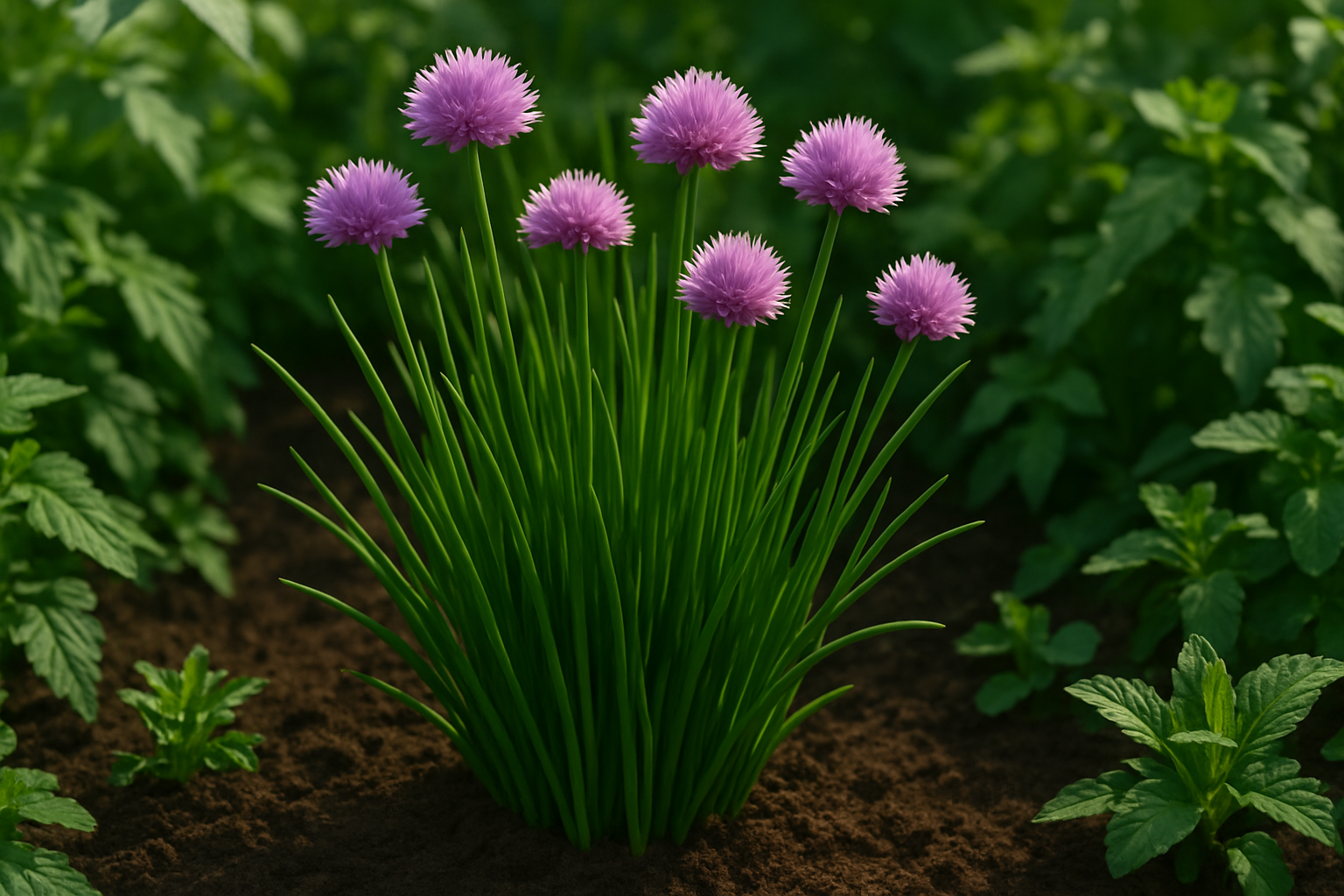Introduction
When it comes to successful indoor gardening, understanding chive light requirements is essential for anyone wanting to enjoy this popular and easy-to-grow herb. Chives are a staple in many kitchens thanks to their mild onion flavor and versatility, but they truly thrive only when given the right amount of light and proper temperature.
Whether you’re hoping to snip fresh chives from your windowsill or cultivate thriving outdoor patches, getting these factors right can make all the difference between sparse, thin growth and lush, flavorful yields. In this guide, we’ll break down exactly how much light chives need, the ideal temperature range for strong, healthy plants, and share practical tips for growers of all experience levels.
Whether you’re a first-time gardener or a seasoned herb enthusiast, these insights will help you unlock vigorous chive growth all season long.
Chives at a Glance
Chives are unmistakable in any herb garden, with their slender, hollow green stems that resemble blades of lush grass and delicate purple-pink blooms that appear in late spring. Their mild onion-like flavor makes them a kitchen favorite for finishing dishes like scrambled eggs, baked potatoes, or salads, offering a gentle punch of savory freshness without overpowering other ingredients.
In the garden, chives are easy-going perennials, thriving in pots or borders and acting as natural pest deterrents—especially against aphids—while also attracting pollinators like bees with their charming flowers. They adapt well to most soils and light conditions but reward you with the best growth and flavor when given plenty of sun, well-drained soil, and regular watering.
For the home cook or beginner gardener, chives are a worry-free plant: simply snip what you need, and they’ll keep growing back. Even a small patch can supply generous harvests throughout the season, making chives both a practical and ornamental choice for anyone looking to boost their culinary repertoire and garden beauty with minimal effort.
Light Requirements for Chives
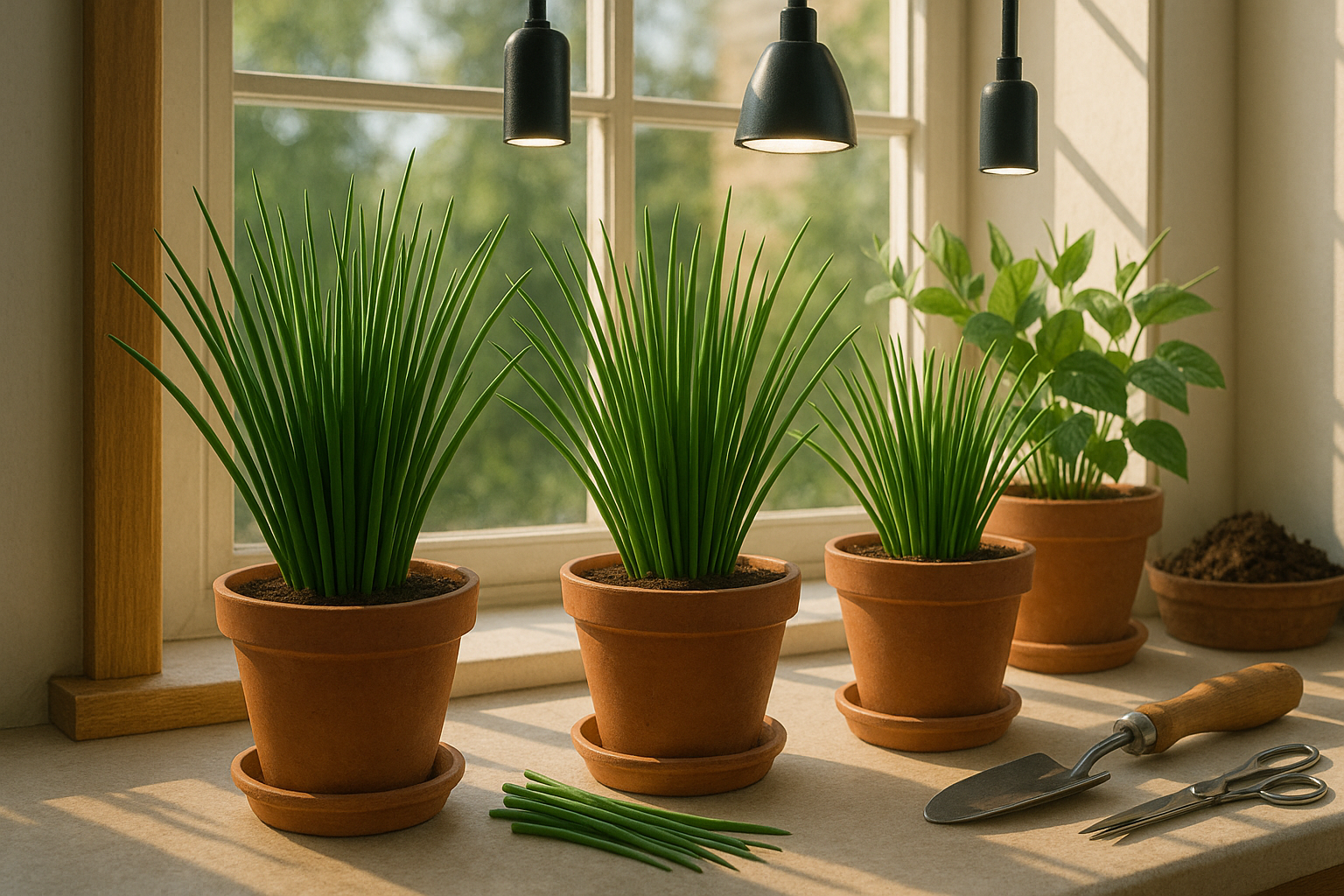
Chives thrive best when they receive plenty of light—ideally, at least six hours of full sun each day. Outdoors, plant chives in a spot that gets direct sunlight, such as a south- or west-facing garden bed. Too much shade will cause chives to grow thin and floppy, with less flavor.
In hot climates, some afternoon shade can be beneficial to prevent scorching, while in cooler climates, maximum sunlight boosts growth and resilience. For indoor gardening, place chive pots on a sunny windowsill, preferably one facing south or southwest where light is strongest. East-facing windows are also suitable but may require rotating your pots regularly to prevent uneven growth or leaning.
If your home doesn’t get enough sunlight—often the case in apartments or during winter months—supplement with a grow light or LED lamp placed a few inches above the chives for 12–14 hours daily. Even a simple desk lamp with a daylight bulb can help if fancy equipment isn’t available. Remember to adjust the light so it’s not too close to the leaves, as direct contact can burn them.
For those with consistently low natural light, try moving chive pots outdoors to a balcony or porch whenever weather allows. With a bit of planning, you can ensure your chives get the bright light they crave, resulting in lush, flavorful harvests year-round—whether you’re growing them on a sunny kitchen windowsill or tucking pots into a shady garden corner.
Ideal Temperature Range for Chive Growth
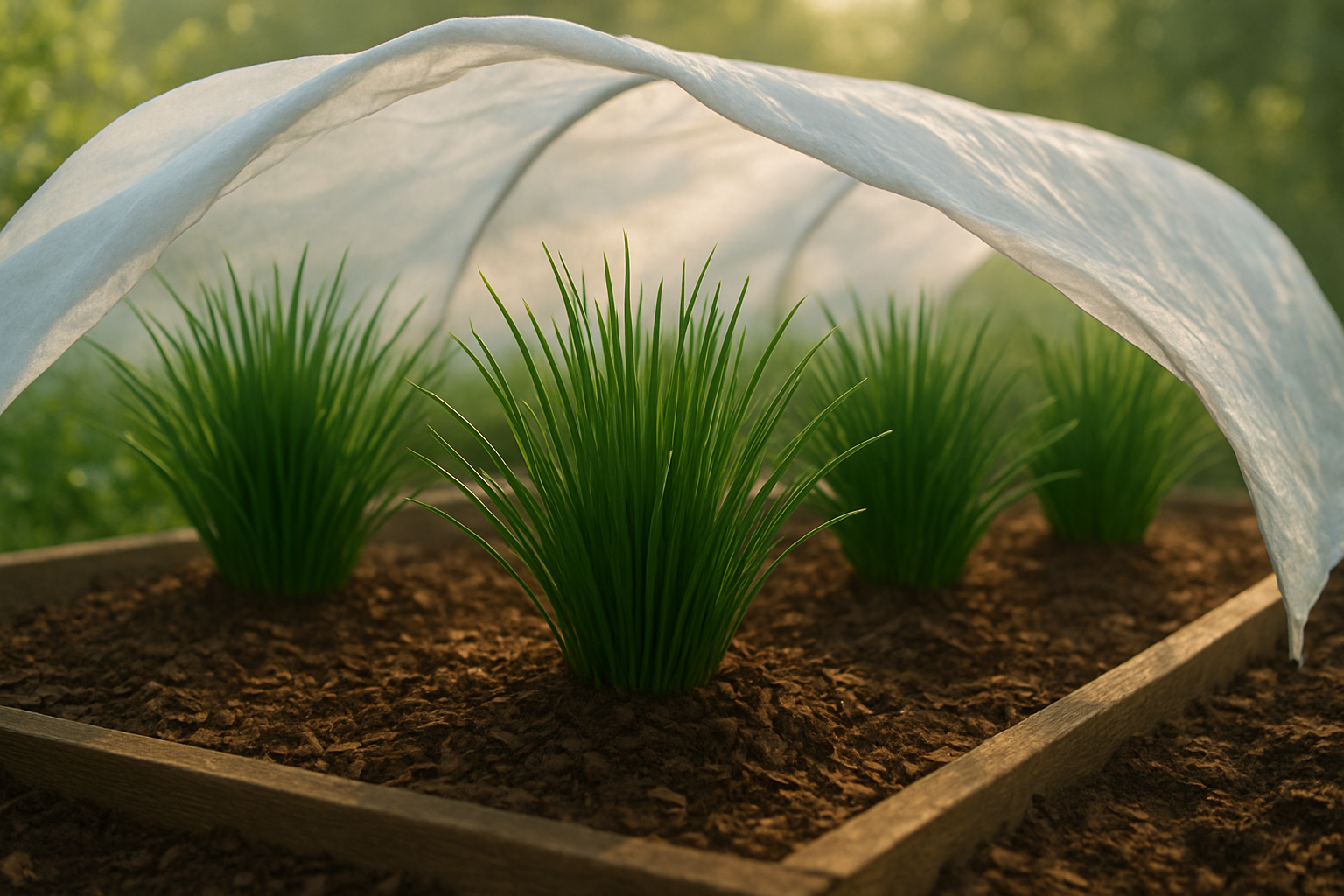
Chives thrive best in mild temperatures, with their optimal growth occurring between 60°F and 75°F (16°C to 24°C). Within this range, the plants produce lush, tender leaves and maintain healthy development. If temperatures drop below 40°F (4°C), chive growth slows dramatically, and the plants may enter a dormant state, halting new leaf production until warmer conditions return.
In extreme cold, especially in regions with harsh winters, chive bulbs can survive underground, but it’s wise for outdoor growers to apply a layer of mulch for added protection. On the flip side, temperatures consistently above 85°F (29°C) can stress chives, leading to thin, tough leaves or causing the plant to bolt—sending up flower stalks prematurely and reducing leaf quality.
For indoor growers, placing chive pots near a sunny windowsill but away from direct heat sources, such as radiators or stoves, helps maintain ideal conditions. Consider using a small fan for air circulation but keep plants away from drafty windows during cold snaps.
Outdoor gardeners can shield chives from summer heat by providing light shading, such as a floating row cover, and keeping soil consistently moist with mulch or regular watering. Monitoring your local forecast and making small adjustments, like moving pots indoors during frosts or offering midday shade during heatwaves, will keep your chives healthy and productive season after season.
Practical Growing Tips for Best Results
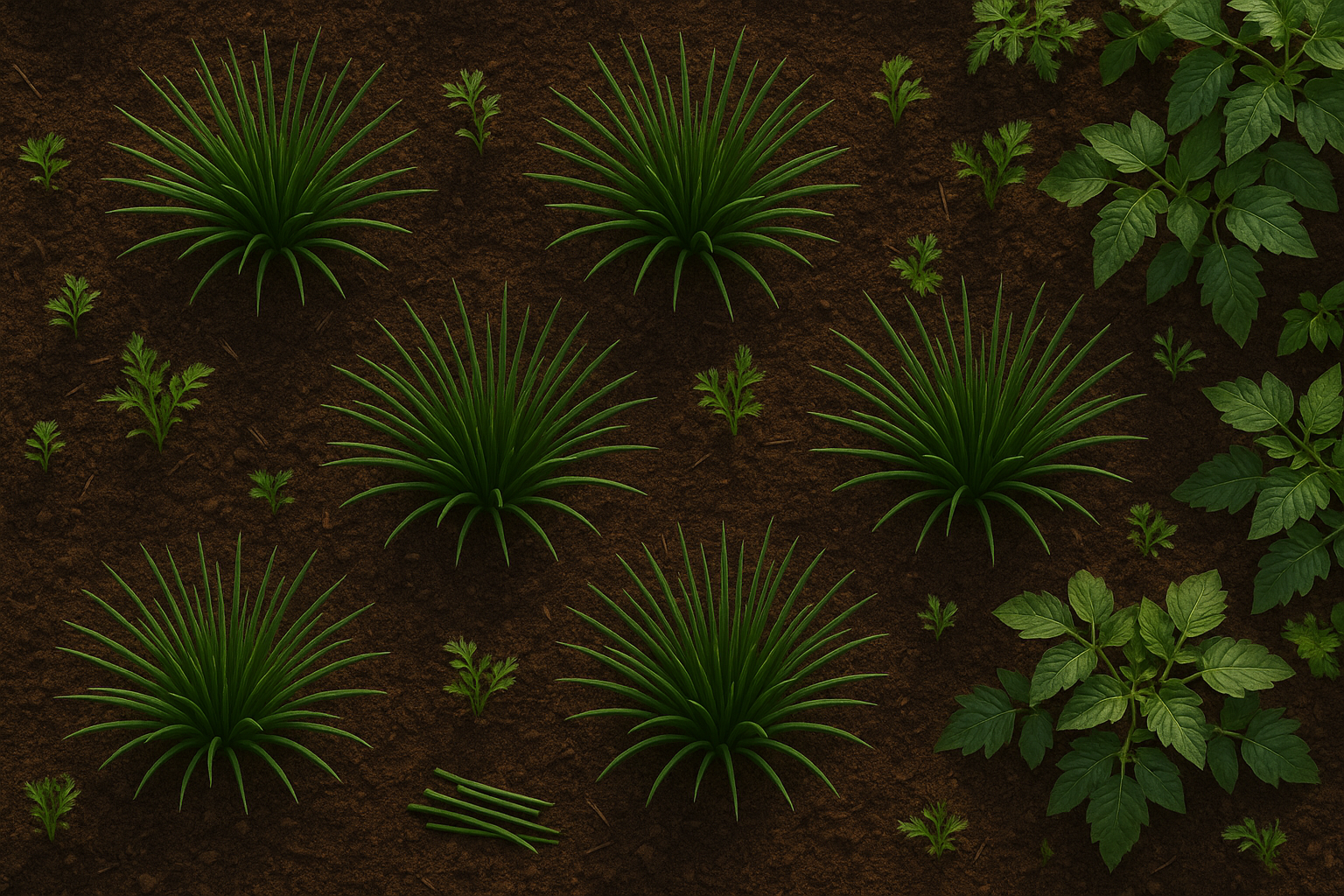
For thriving chives, start by choosing a sunny spot since these herbs love at least six hours of direct sunlight daily—though they’ll tolerate a bit of partial shade. Plant chive seeds or young plants about 8 to 12 inches apart in well-draining, fertile soil rich with organic compost. This spacing allows proper airflow and helps prevent mildew.
Chives aren’t too fussy about soil pH but do best in moderately moist earth. Water consistently, especially during hot spells, keeping the soil damp but never soggy. Early spring is prime time for sowing chives outdoors as soon as the risk of frost passes, but you can also grow them in a sunny container on a windowsill year-round for fresh greens every season.
For best companion planting, group chives near carrots, tomatoes, or roses to naturally repel aphids and boost growth—just avoid pairing them with beans or peas, which can stunt each other’s development. Harvest tender leaves by snipping at the base, keeping around a third of the plant intact to ensure continual growth.
With mindful positioning, smart watering, and timely planting, you’ll enjoy healthy, flavorful chives from spring through late fall.
Troubleshooting Common Growth Problems
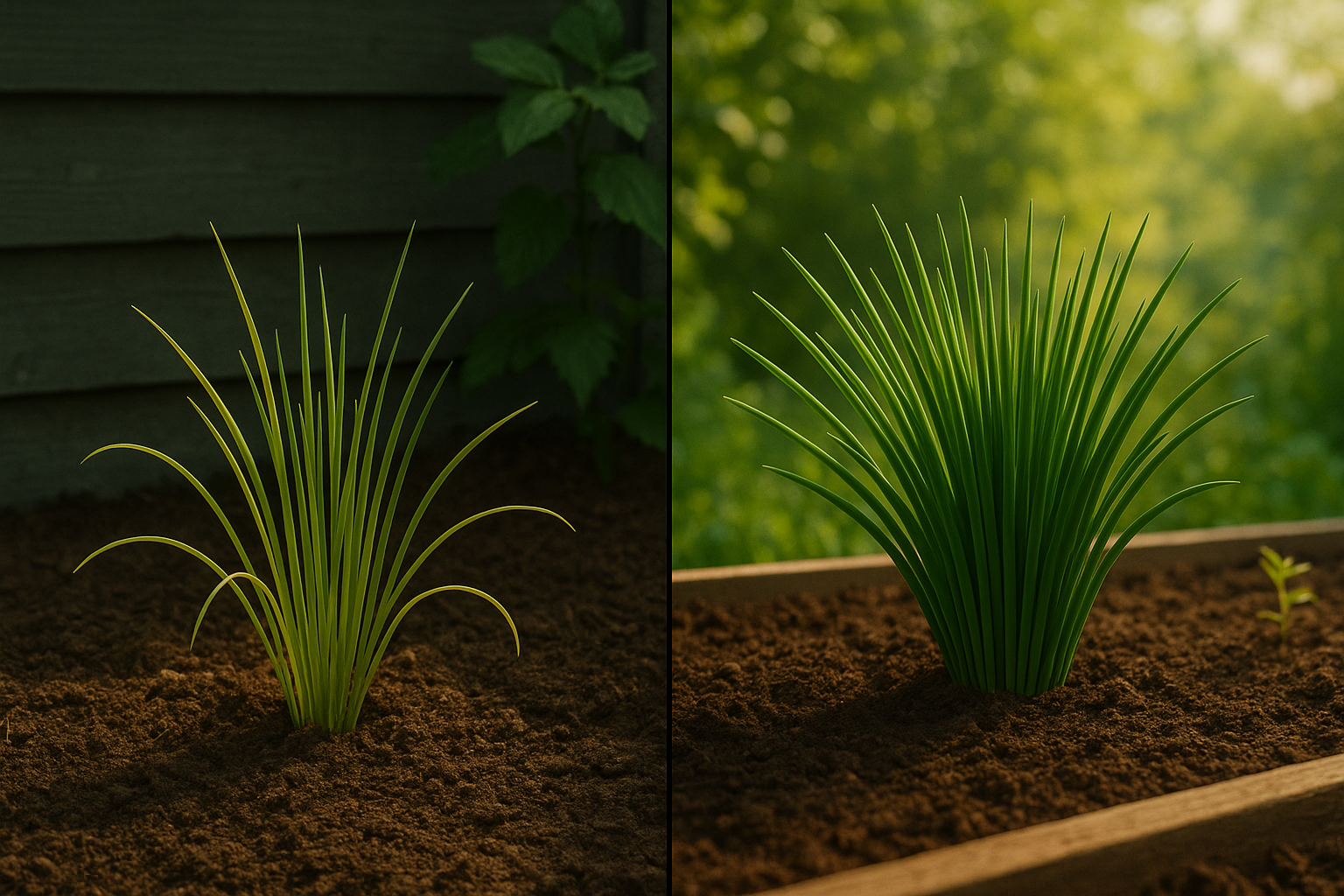
Noticing yellow leaves, spindly stems, or sluggish growth? These classic signs often mean your plants aren’t getting enough light or are struggling with the wrong temperature. For indoor setups, try moving your plants closer to a sunny window or invest in an affordable grow light to mimic natural sunlight—many options can easily clip onto shelves or desks.
Outside, yellowing during hot afternoons might suggest your plants are getting scorched; lightweight shade cloths can filter out the harshest sun while still letting plenty of light through. On chilly nights or during sudden cold snaps, bring tender pots indoors, use frost blankets, or cluster plants together to help retain heat.
As your plants recover, you’ll notice new healthy leaves emerging, stems thickening, and overall faster, greener growth—clear signs they’re bouncing back. Keep checking your setup to adjust light direction as the seasons shift, and monitor temperatures with a simple thermometer.
Keeping a weekly photo log can help you catch subtle changes early, so you can adjust care before small problems become big ones. Regular tweaks mean thriving plants all year long, even if your growing conditions aren’t perfect.
Conclusion & Quick Reference
Chives thrive in bright, indirect sunlight—about six hours a day is ideal—so a sunny windowsill or a spot with filtered light works great indoors. They prefer average room temperatures between 60-75°F (15-24°C), avoiding sudden drafts or heat spikes.
If your chives look leggy or weak, try giving them a bit more light or relocating them. Don’t stress if you don’t get it perfect right away; pay attention, experiment with placement, and adjust as needed.
Remember: bright light, moderate temperatures, and attentive observation are your keys to healthy, flavorful chives.
